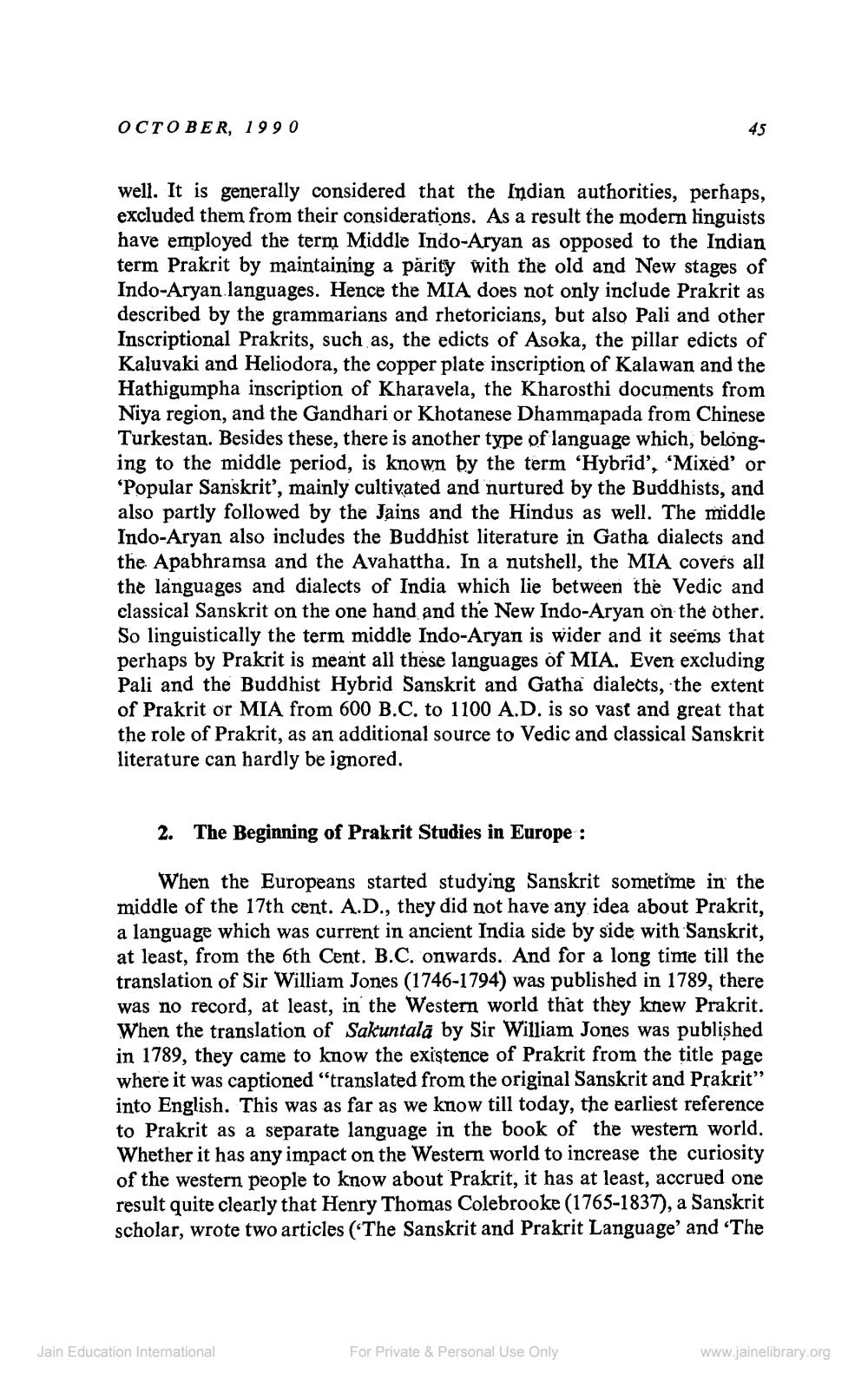Book Title: Jain Journal 1990 10 Author(s): Jain Bhawan Publication Publisher: Jain Bhawan Publication View full book textPage 6
________________ OCTOBER, 1990 well. It is generally considered that the Indian authorities, perhaps, excluded them from their considerations. As a result the modern linguists have employed the term Middle Indo-Aryan as opposed to the Indian term Prakrit by maintaining a părity with the old and New stages of Indo-Aryan languages. Hence the MIA does not only include Prakrit as described by the grammarians and rhetoricians, but also Pali and other Inscriptional Prakrits, such as, the edicts of Asoka, the pillar edicts of Kaluvaki and Heliodora, the copper plate inscription of Kalawan and the Hathigumpha inscription of Kharavela, the Kharosthi documents from Niya region, and the Gandhari or Khotanese Dhammapada from Chinese Turkestan. Besides these, there is another type of language which, belonging to the middle period, is known by the term 'Hybrid', 'Mixed' or ‘Popular Sanskrit', mainly cultivated and nurtured by the Buddhists, and also partly followed by the Jains and the Hindus as well. The middle Indo-Aryan also includes the Buddhist literature in Gatha dialects and the Apabhramsa and the Avahattha. In a nutshell, the MIA covers all the languages and dialects of India which lie between the Vedic and classical Sanskrit on the one hand and the New Indo-Aryan on the other. So linguistically the term middle Indo-Aryan is wider and it seems that perhaps by Prakrit is meant all these languages of MIA. Even excluding Pali and the Buddhist Hybrid Sanskrit and Gatha dialects, the extent of Prakrit or MIA from 600 B.C. to 1100 A.D. is so vast and great that the role of Prakrit, as an additional source to Vedic and classical Sanskrit literature can hardly be ignored. 2. The Beginning of Prakrit Studies in Europe : When the Europeans started studying Sanskrit sometime in the middle of the 17th cent. A.D., they did not have any idea about Prakrit, a language which was current in ancient India side by side with Sanskrit, at least, from the 6th Cent. B.C. onwards. And for a long time till the translation of Sir William Jones (1746-1794) was published in 1789, there was no record, at least, in the Western world that they knew Prakrit. When the translation of Sakuntala by Sir William Jones was published in 1789, they came to know the existence of Prakrit from the title page where it was captioned "translated from the original Sanskrit and Prakrit" into English. This was as far as we know till today, the earliest reference to Prakrit as a separate language in the book of the western world. Whether it has any impact on the Western world to increase the curiosity of the western people to know about Prakrit, it has at least, accrued one result quite clearly that Henry Thomas Colebrooke (1765-1837), a Sanskrit scholar, wrote two articles (“The Sanskrit and Prakrit Language' and 'The Jain Education International For Private & Personal Use Only www.jainelibrary.orgPage Navigation
1 ... 4 5 6 7 8 9 10 11 12 13 14 15 16 17 18 19 20 21 22 23 24 25 26 27 28 29 30 31 32 33 34 35 36 37 38 39 40 41 42 43 44 45 46 47 48 49 50 51 52 53 54 55 56 57 58 59 60 61
